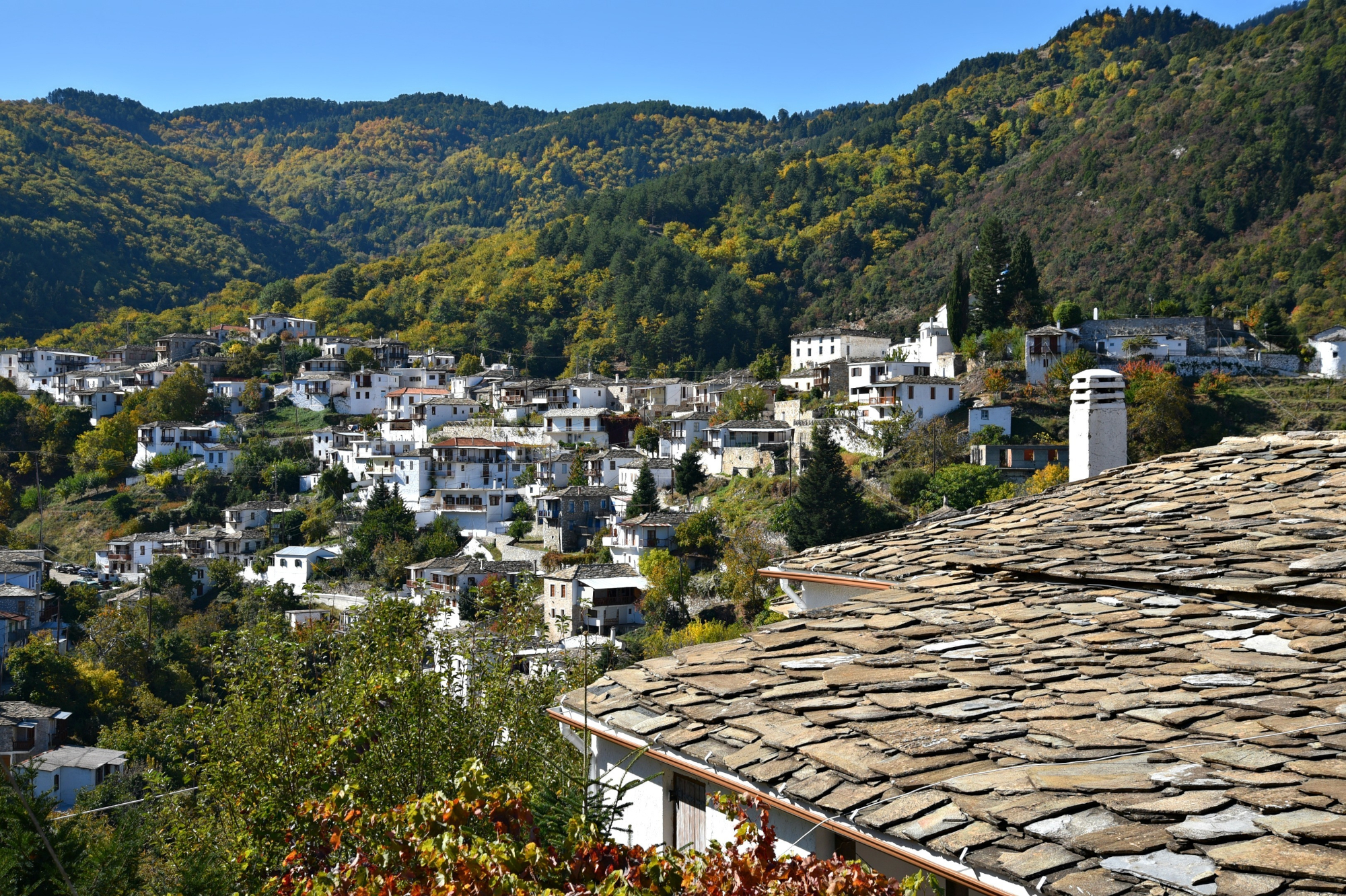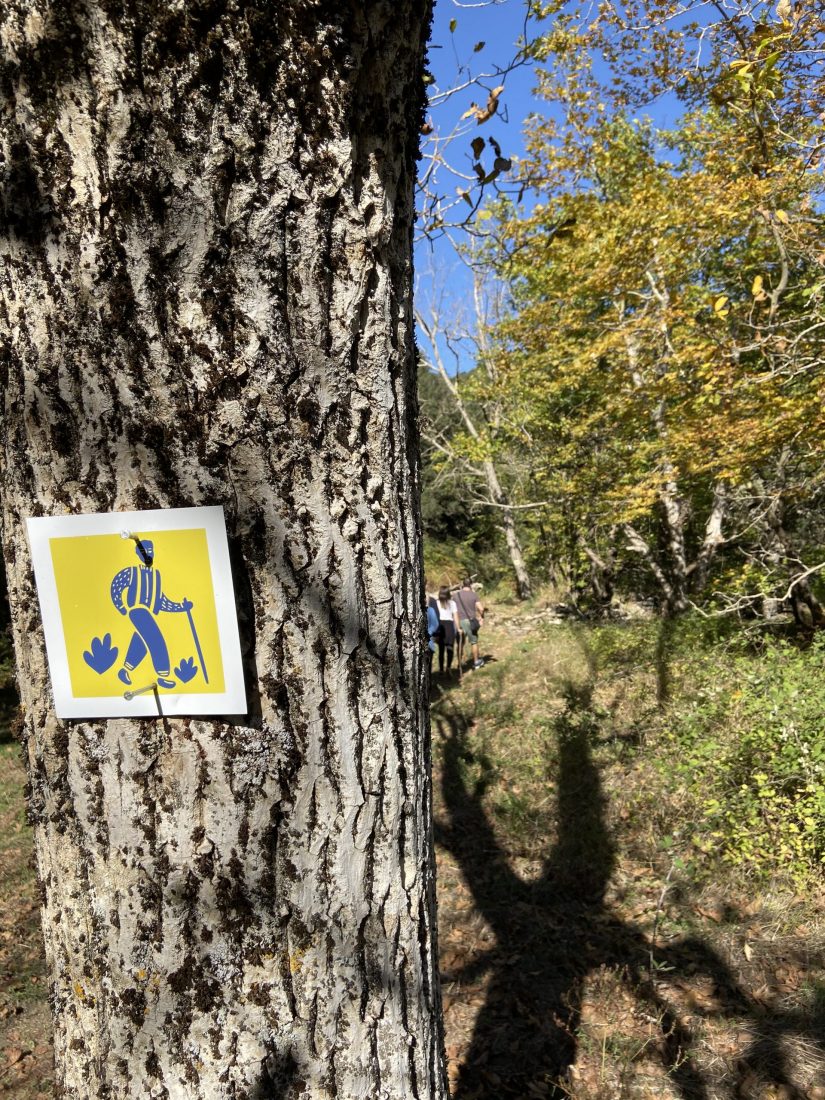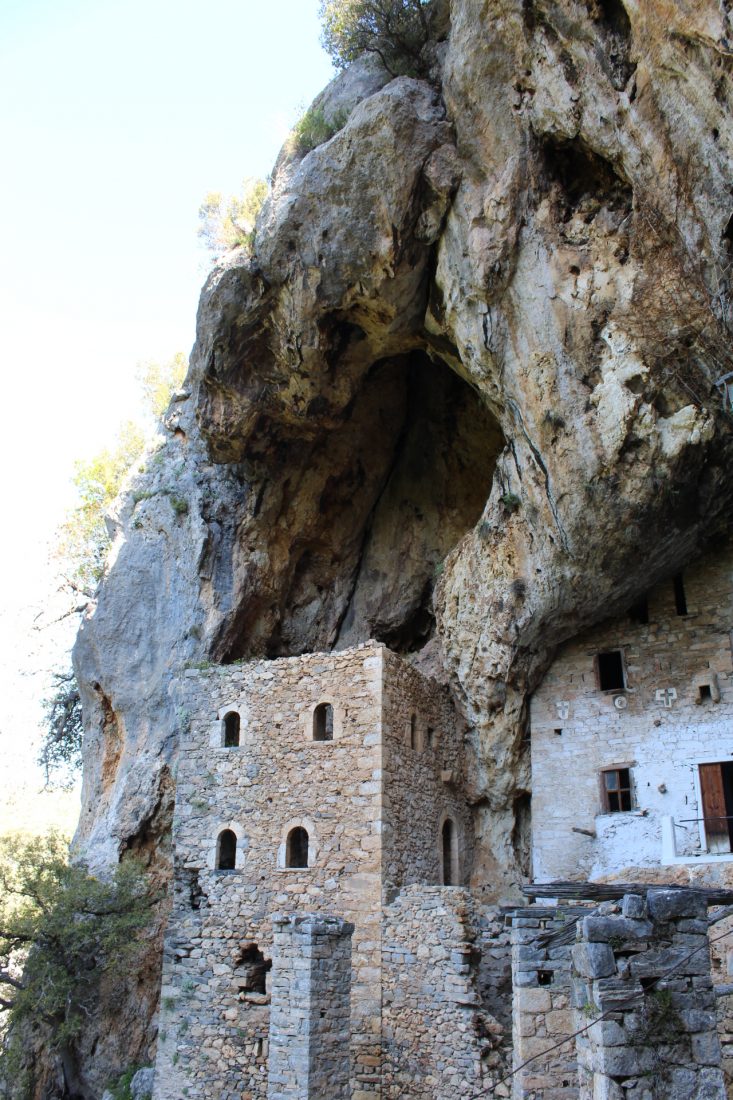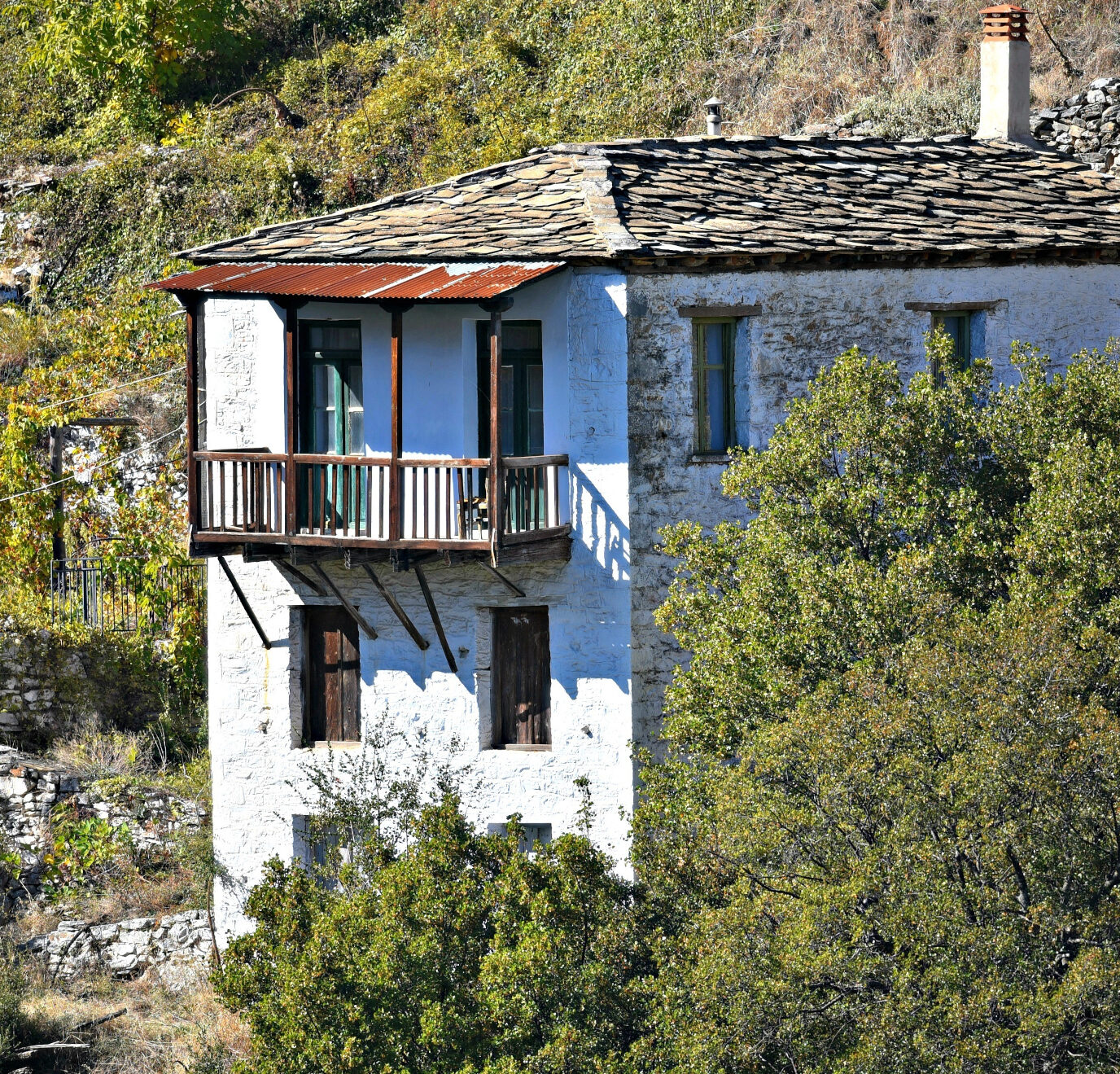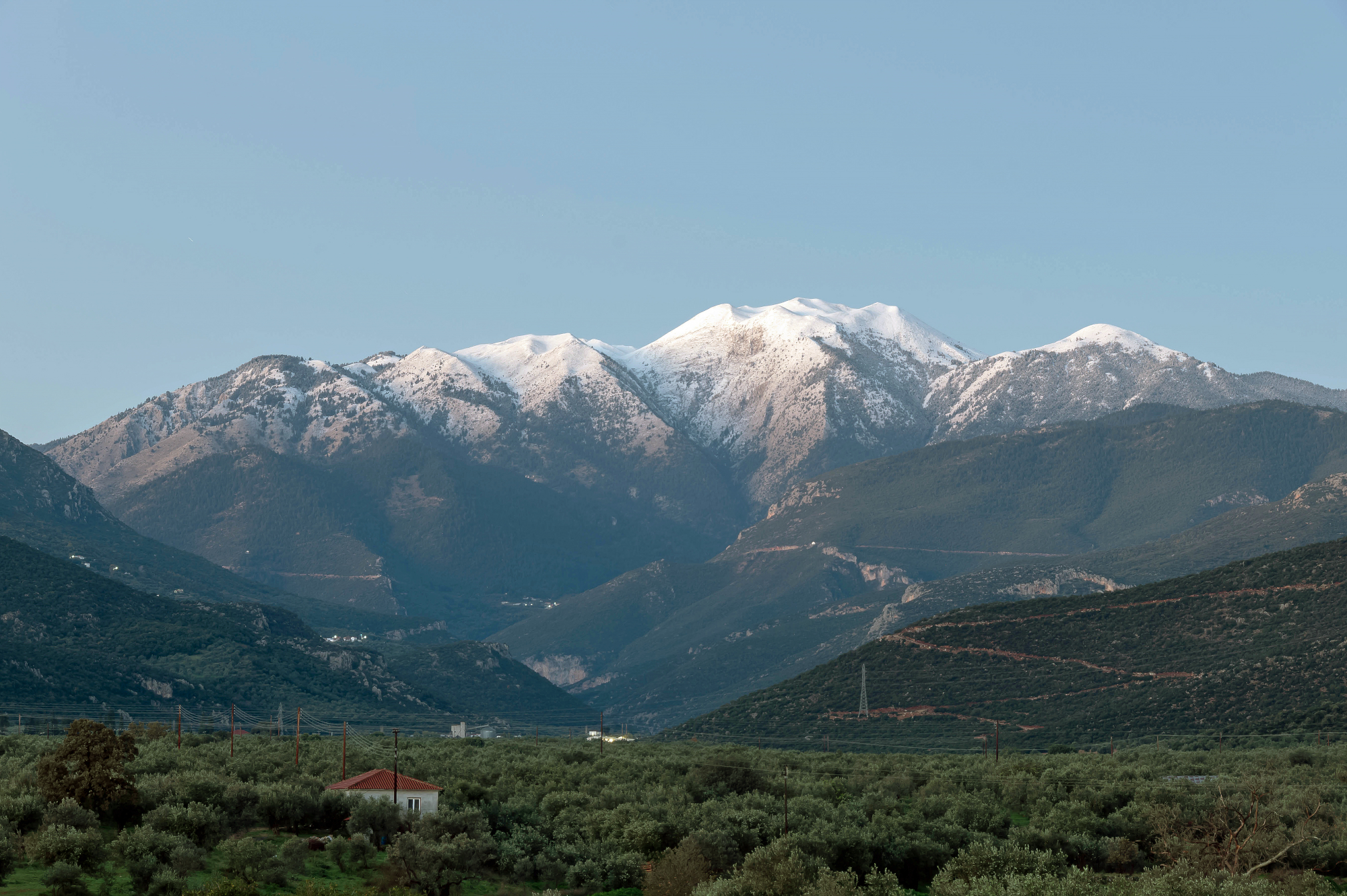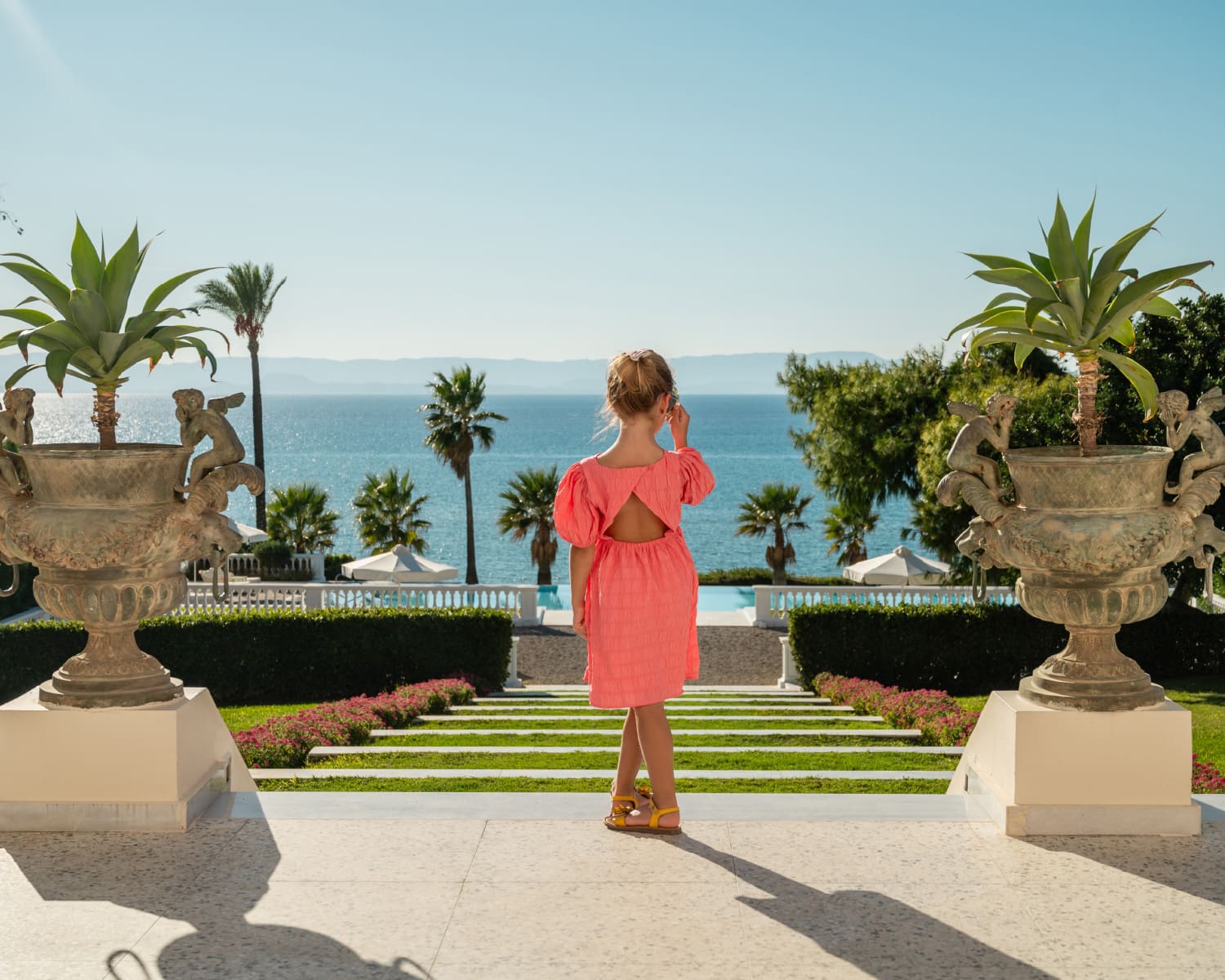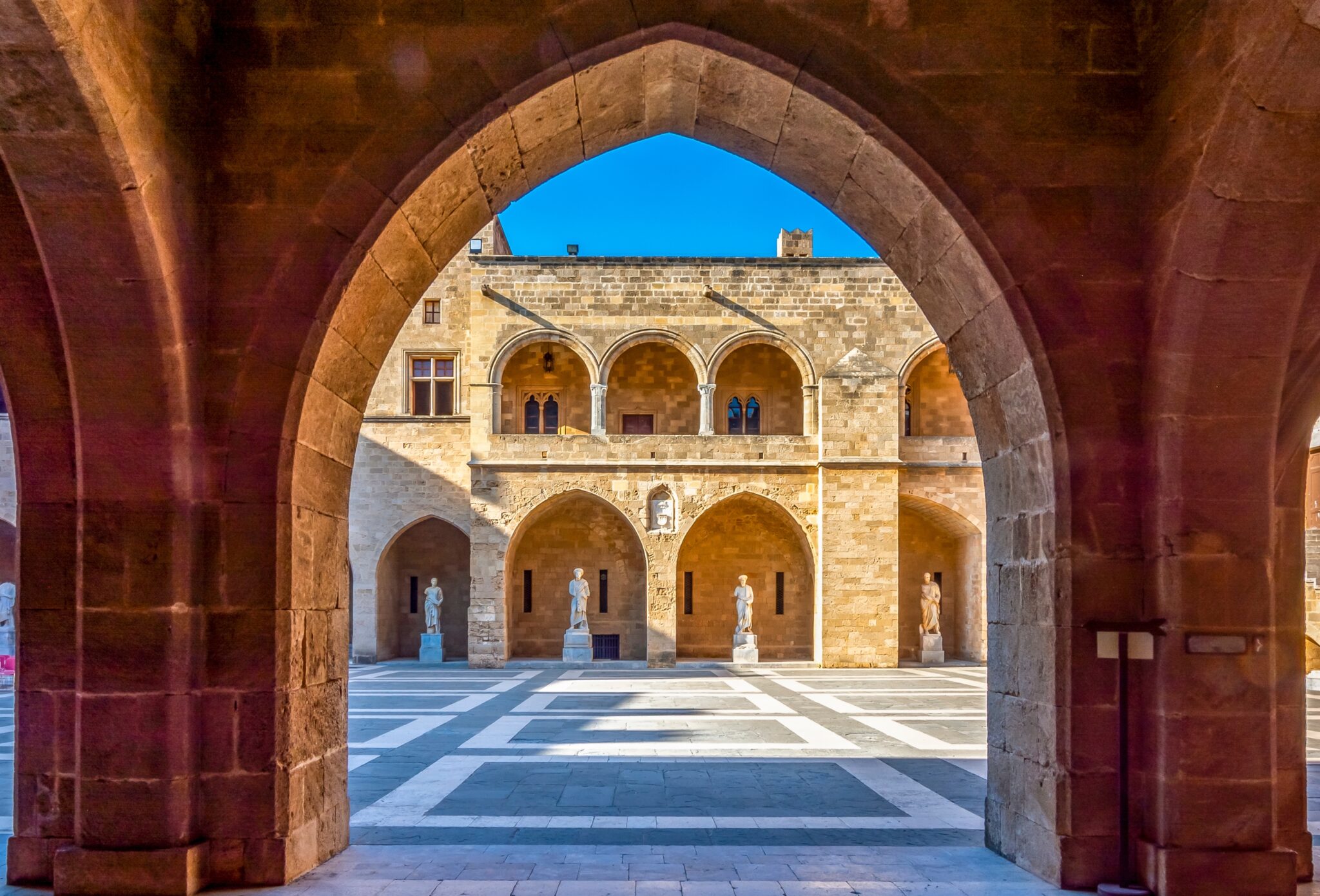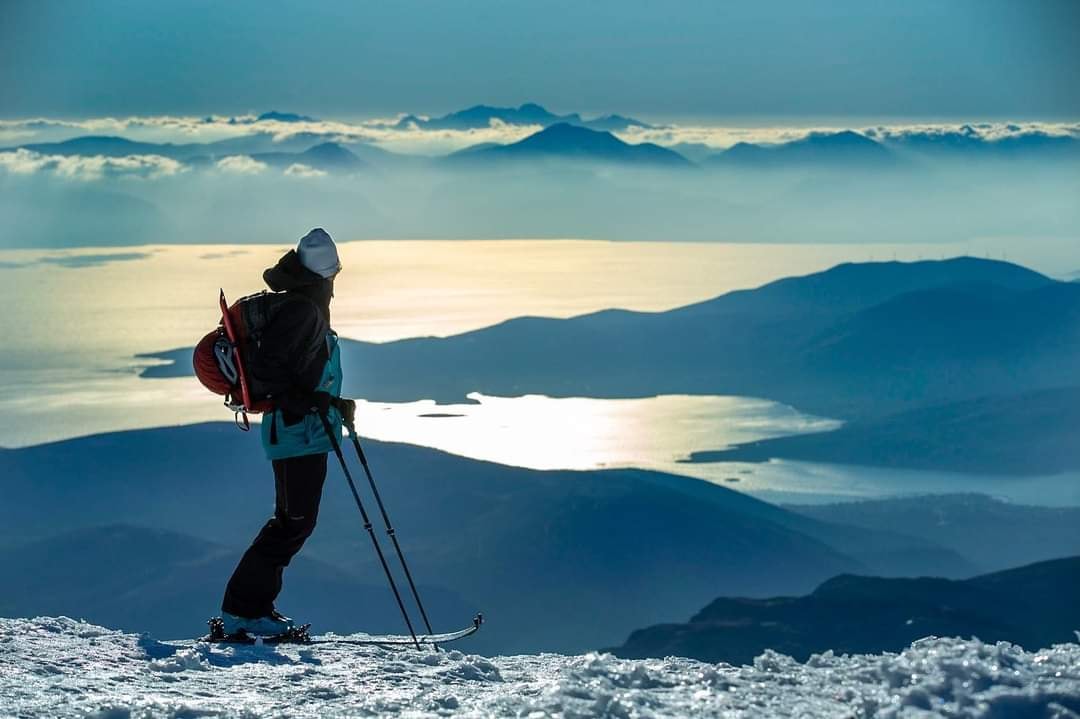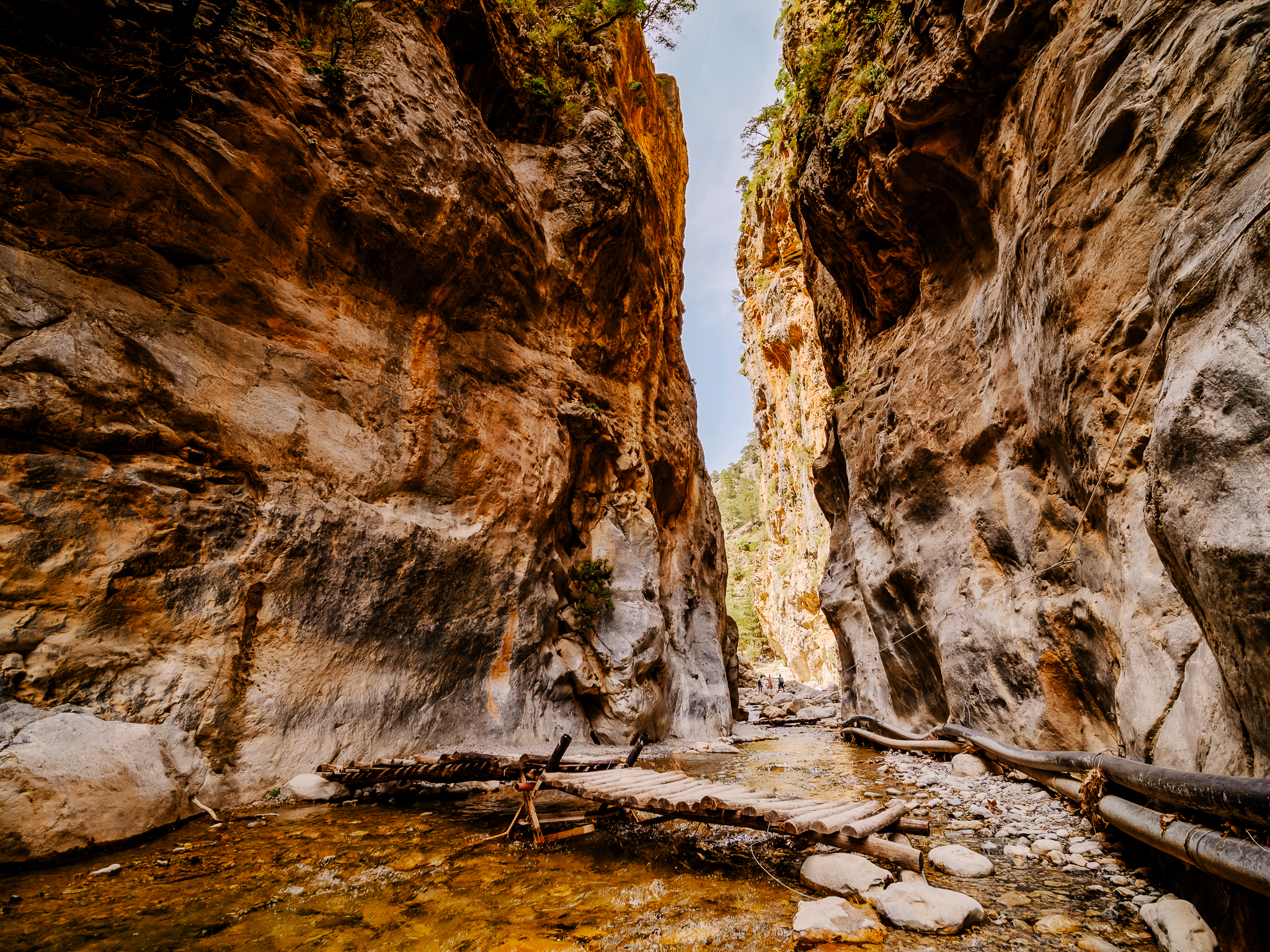Parnonas or Malevos Mountain –1934 metres high and 100 kilometres long- extends over a large part of the Peloponnese, starting from Tegea and reaching the cape of Maleas.
On its tree-lined slopes are perched small beautiful villages, monasteries and churches, as well as nestled caves, springs and lower waterfalls. Parnonas boasts numerous hiking and climbing routes, among which the largest are the European Trail E4 and the National Trail O33. Yet, there are also many smaller ones, mainly around the villages, following the paths that used to connect the latter in the past. As there are many villages, this time we chose four, but we plan to return to the mountain soon for the rest.
Located at an altitude of 900 metres, birthplace of Greek billionaire shipping tycoon Stavros Niarchos, Vamvakou, a village that has received much publicity in recent years, is well-worth a visit. Although the village flourished many decades ago, it gradually became deserted and the signs of abandonment are evident. However, in 2018 a group of five young people hailing from the village, in collaboration with the Stavros Niarchos Foundation, breathed new life into Vamvakou through the Vamvakou Revival programme. Activities include many events for children and adults, many of which revolve around the walnut trees that abound in the area, as well as robotics workshops. Built in the 15th century, the village is extremely scenic and lush; within just a few minutes you may find yourselves lost in the fir trees. Overlooking the mountain peaks, the main square of the village is overwhelmingly beautiful. The imposing church of Agios Haralambos, along with a huge plane tree, has been standing in the square as vigilant guards for many years.
There are many routes starting from Vamvakou; cycling routes to the refuge of Parnonas, Horostasi and Kato Vrysi, as well as hiking routes to Megali Tourla, the top of Parnonas, or Platy Potami. If you follow the yellow path that starts from the main square towards the forest, you will reach the cave monastery of Agia Kyriaki. The route goes through the forest, next to the river. Although the monastery is now unoccupied, the location is truly impressive.
Built amphitheatrically at an altitude of 840 metres, surrounded by chestnut trees, Kastanitsa is another one of the many beautiful villages of Parnonas. Stone-built houses, some of them whitewashed, others featuring wooden balconies and some stone arched front doors, but all of them slate-roofed. Scattered around the village, there are also numerous tower houses –perhaps the most impressive feature of the village. Three-storey mansions with a strict architectural character, standing there for almost three centuries, with small wooden balconies and narrow windows, roofs made of grey slate from Parnonas, some of them even crenelated.
Strolling through the cobbled streets is the best way to get to know the village, marvel at its remarkable austere architecture, and meet the locals who have many stories to tell, such as the story of the Russian-style wood-carved iconostasis of the church of the Transfiguration; how it was ordered from Odessa and how it arrived in the village. Or the story about byzantine tower of the 14th century, located on the hill of the village, featuring the most amazing view of the chestnut forests and fir trees on the slopes of Malevos extending to the Argolic Gulf. They will also give you directions to the chapels through the wooded paths, such as that of Agios Georgios over the village or that of Agios Panteleimon in the wonderful chestnut grove of Kastanitsa. Ask them about the once-impressive watermills, three in total, outside the village. Unfortunately, the ruins of only one of them, which fell into disuse in the 1970s, still stand today. At the old primary school, in Agianni Square, you can visit the Environmental Information Centre of Kastanitsa, where you will learn all about the natural heritage and ecological value of Parnonas, the trails and gorges of the area, the unique chestnut forest and the special architecture of Kastanitsa and the surrounding villages.
Tsintzina or Polidroso is also one the most preferred villages of Parnonas. Perched at an altitude of 1000 m, the village is almost divided into two slopes with houses reaching the bottom of the hill, a gorge crossing the lower village and stone bridges connecting it to the upper one. The huge fir and pine trees overwhelm the landscape and hold wonderful paths and glades for you to discover. From here start nine signposted paths, some difficult and others easier, leading through the forest and reaching small churches or springs.
Follow the path that leads to the cavernous church of Agios Ioannis Prodromos, built during the Turkish occupation. The view from there is breath-taking, as is the view from the chapel of Agia Marina, a favourite spot of climbers. Keli, another small chapel dedicated to Panagia Keliotisa, with the homonymous spring, is worth the climb. From here you can also reach Agia Marina. More experienced and passionate hikers can follow the path in the gorge that leads to Megali Tourla, the peak of Parnonas. There are routes of 38 and 48 km through fir woods for mountain biking enthusiasts, while there are also 4×4 routes for all avowed lovers of off road adventures. Ten kilometres from the village lies the chapel of Agioi Apostoloi inside the monastery of Agioi Anargyroi, painted by the famous Greek painter Fotis Kontoglou, which is worth including in your itinerary.
At an altitude of about 1,150 m, amidst lush fir forests, there is another village you should put on your list, Kosmas; neat little stone houses, cobbled streets and an amazing view that reaches, when the weather is good, all the way to Spetses. The route from Leonidio to the village may be much longer and more difficult, but it is far more impressive and well-worth the effort. Besides, you can make a stop at the monastery of Panagia Eloni, built in the 14th century above the gorge of Dafnonas. Arriving in the village you enter what is probably the largest chestnut forest in Greece, a fairyland of a forest to walk in.
Of course, in the centre of the village lies, shaded by huge plane trees, the main square with the imposing church of Agioi Anargyroi, at the back of which you will find three marble lion head fountains. Here, gazing at the amazing view, you will spend most of your time listening to stories from the good old days of the village and drinking tsipouro (a quintessential Greek spirit). Take a short drive or hike to the chapel of Profitis Elias above the village and enjoy the wonderful view all along the way. Or, take the road to Platanaki or Agios Vassilios. After driving for a while on a dirt road, you will reach a stone fountain that dates back to 1929, situated in a lovely location full of plane trees and streams. You can also get here by walking along the signposted, circular path Kosmas – Kato Ai Giorgis – Potistres – Kosmas, which is about 8 km long. Another beautiful hiking route is the one from Kosmas to Mazarakiotiko well and the fire lookout tower. The Folklore museum of the village features tools such as loom combs, wood carvings, ceramics and textiles that tell the story of Kosmas through the years.
Of course Parnonas is not limited to the above. Instead, boasts dozens of villages such as Prastos, the old capital of Tsakonia with its stone tower houses and beautiful churches, Agios Petros, the largest village of the region, the stunning village of Karyes, the mysterious village of Geraki with the byzantine necropolis and many many more. And of course, sensational nature; a unique in Europe cedar forest, included in the European ecological network Natura 2000 –close to the monastery of Malevi-, the Sitaina oak forest, the waterfalls in the gorge of Loulougkas north of Sitaina, as well as the smaller waterfall at the entrance of Platanos village, the gorges of Koutoupou and Zarbanitsa, and the list goes on.
Where to stay
Ruga of Vamvakou: Beautiful rooms with simple yet sophisticated decoration, some of which can accommodate up to 6 guests. There is also a café-tavern. (Vamvakou, +30 27310 21900, https://www.rugaofvamvakou.gr/ )
Antoniou Guesthouse: Well-kept traditional guest house with a tavern. (Kastanitsa, +30 27550 52255, https://sun-mountain-snow.gr/el/ )
Pritanio Guesthouse: Traditional guesthouse with beautiful decoration and rooms with mountain views. (Tsintzina, +30 27310 26982, https://www.pritanio.gr/ )
Ouranogiton Guesthouses: Stone-built atmospheric guesthouse featuring beautiful rooms. (Kosmas, +30 27570 31490, https://ouranogeiton.gr/ )
Where to eat
Voureiko: Located on the main square of the village of Vamvakou serving traditional Greek cuisine (Vamvakou, +30 27310 27964)
Liakouris: Traditional tavern offering local flavours and ingredients (Kastanitsa, +30 27550 52293)
Koukounari Tavern: Offering traditional flavours, from stews and pies to casserole dishes (Tsintzina, +30 694 4474767)
Kedros: Traditional Greek flavours served in a beautiful courtyard with a nice view (Kosmas, +30 697 8876592)



